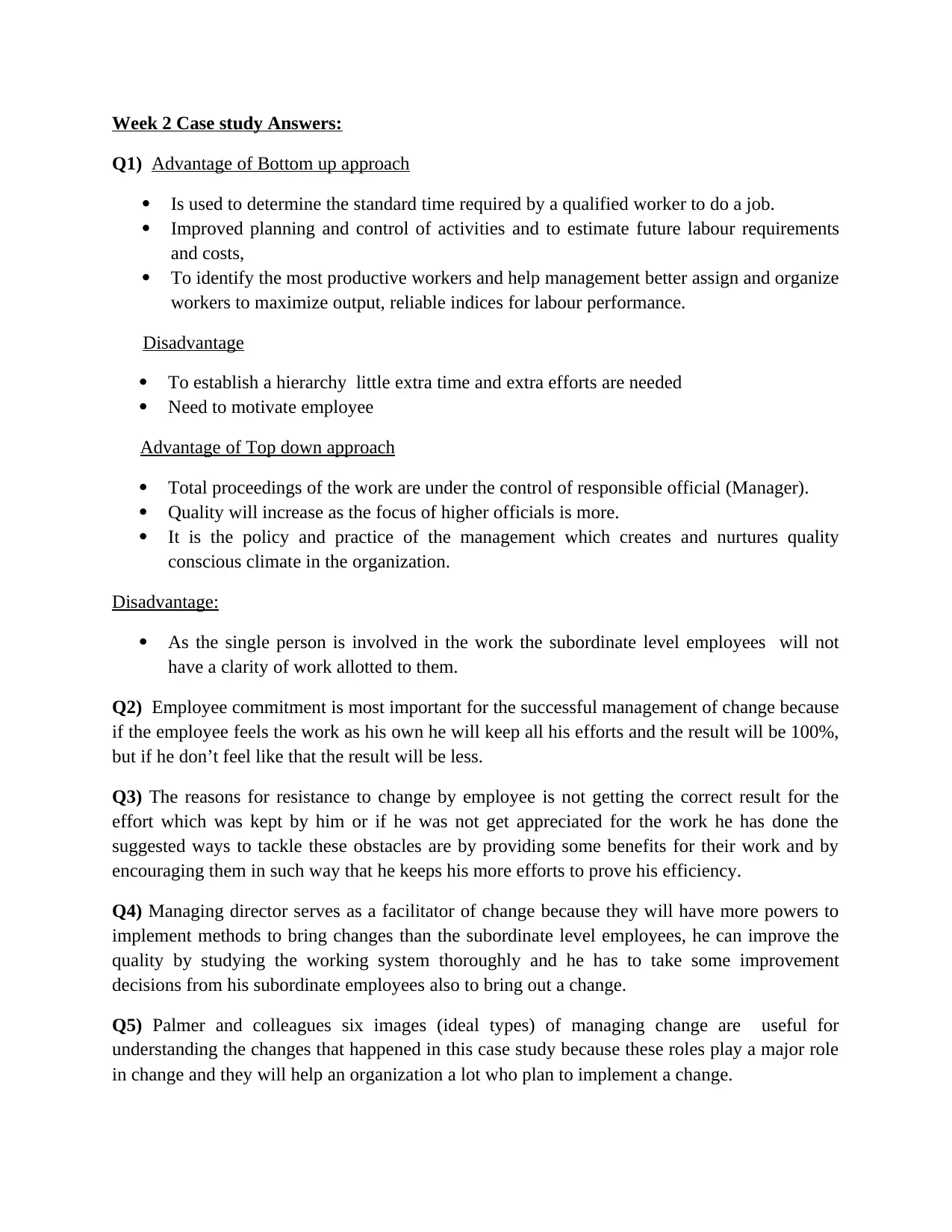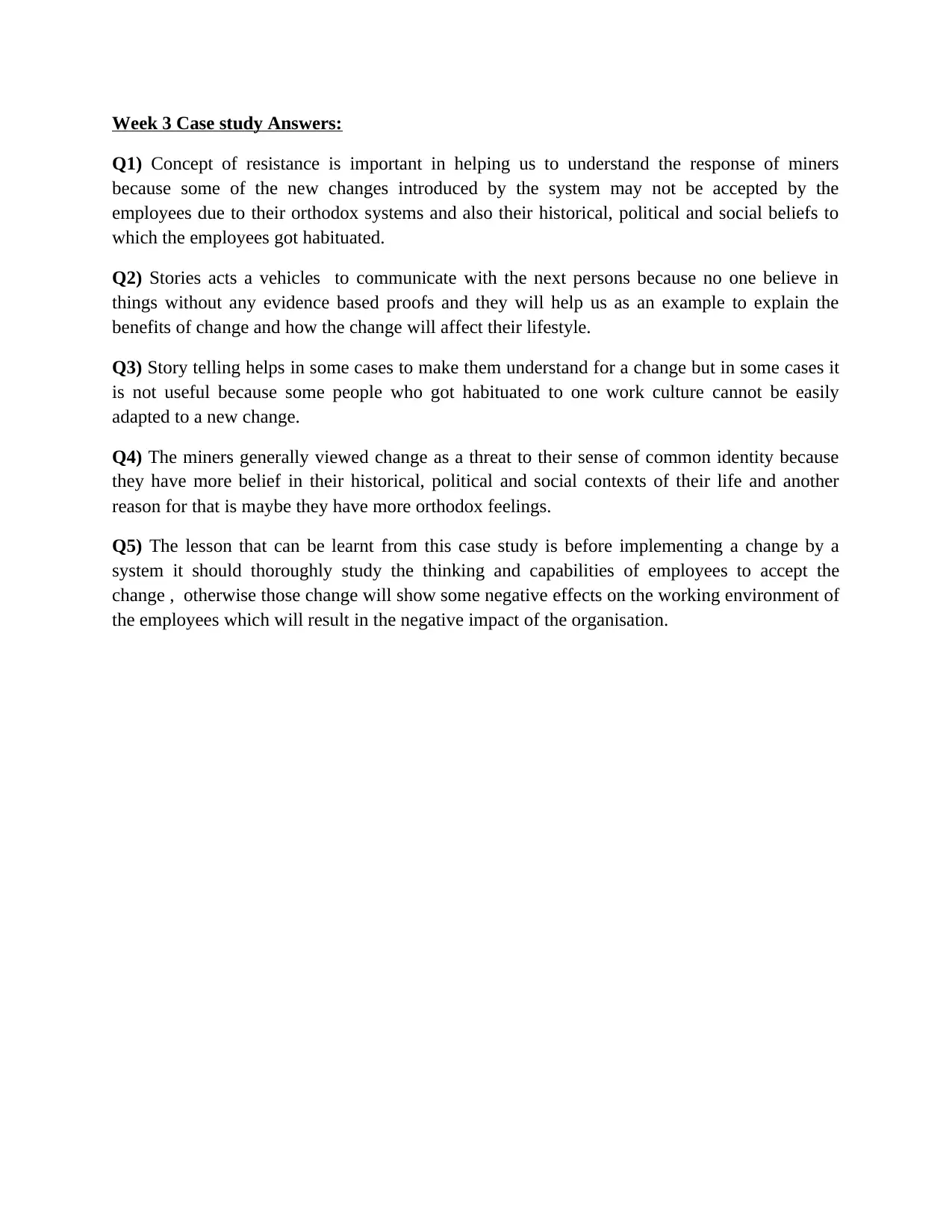Analyzing Resistance: Case Studies in Change Management Strategies
VerifiedAdded on 2023/06/08
|2
|659
|82
Case Study
AI Summary
This assignment provides solutions to two case studies focusing on change management within organizations. The first case examines the implementation of a new managerial approach at 'Mybank,' highlighting the shift from a bottom-up to a top-down strategy and the importance of employee commitment. It discusses the advantages and disadvantages of both approaches and addresses how to tackle employee resistance. The second case explores resistance to change in an Australian coal mine following the introduction of a new performance appraisal system, emphasizing the role of historical, political, and social beliefs. It also discusses the use of storytelling as a communication tool and the lessons learned regarding the importance of understanding employee perspectives before implementing change. Both case studies underscore the complexities of change management and the critical need for effective leadership and employee engagement. Desklib provides a platform to access these solved assignments and other study resources.
1 out of 2








![[object Object]](/_next/static/media/star-bottom.7253800d.svg)